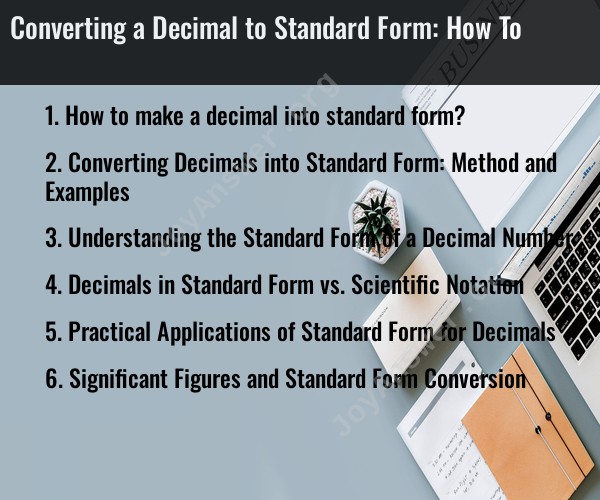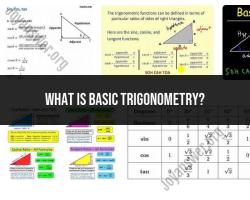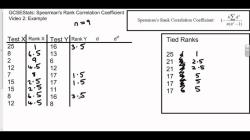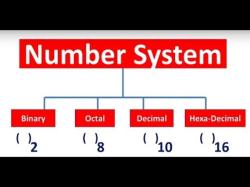How to make a decimal into standard form?
Converting a decimal number into standard form involves expressing the number in the form of A × 10^n, where A is a number greater than or equal to 1 and less than 10, and n is an integer. The process is also known as scientific notation. Here's how to convert a decimal to standard form:
Identify the Decimal Number: Begin with the decimal number you want to convert to standard form.
Move the Decimal Point: To create a number greater than or equal to 1 and less than 10, move the decimal point to the right or left as needed, while keeping track of how many places you move it. Move the decimal point so that you have a single non-zero digit to the left of the decimal point.
Count the Decimal Places Moved: Count the number of places you moved the decimal point. If you moved it to the right, the count will be positive; if you moved it to the left, the count will be negative.
Write the Number in Standard Form: Write the number in the form A × 10^n, where A is the number with one non-zero digit to the left of the decimal point, and n is the number of decimal places you moved the decimal point. If you moved the decimal point to the right, n will be positive; if you moved it to the left, n will be negative.
For example, consider the decimal number 0.0042:
- Move the decimal point to the right until you have a single non-zero digit to the left: 0.0042 becomes 4.2.
- Count the number of places you moved the decimal point (four places to the right).
- Write the number in standard form: 4.2 × 10^(-4).
Another example, for a larger number, consider 12345.6789:
- Move the decimal point to the left until you have a single non-zero digit to the left: 12345.6789 becomes 1.23456789.
- Count the number of places you moved the decimal point (four places to the left).
- Write the number in standard form: 1.23456789 × 10^4.
Converting a decimal to standard form is useful when working with very large or very small numbers, as it simplifies their representation and makes calculations more manageable.
Converting Decimals into Standard Form: Method and Examples
Standard form, also known as scientific notation, is a way of expressing very large or very small numbers in a compact and easy-to-read format. It is commonly used in science, engineering, and other fields where large or small numbers are frequently encountered.
To convert a decimal into standard form, follow these steps:
Identify the decimal point and count the number of digits to the right of the decimal point before the leading non-zero digit. This number will be the exponent of 10.
Move the decimal point to the right of the leading non-zero digit, without changing the value of the number.
Write the resulting number as a coefficient between 1 and 10, followed by the exponent of 10.
Examples:
Convert 0.00000000034 to standard form.
Move the decimal point 10 places to the right: 3.4000000000
Write the result as a coefficient between 1 and 10, followed by the exponent of 10: 3.4 x 10^(-10)
Convert 1234567890 to standard form.
Move the decimal point 9 places to the right: 1.23456789 x 10^(9)
Understanding the Standard Form of a Decimal Number
In standard form, a decimal number is expressed as a coefficient multiplied by a power of 10. The coefficient is a number between 1 and 10, and the exponent of 10 indicates the number of times the decimal point is shifted to the left or right.
For example, in the number 3.4 x 10^(-10), the coefficient is 3.4 and the exponent of 10 is -10. This means that the decimal point is shifted 10 places to the left, effectively making the number very small.
Decimals in Standard Form vs. Scientific Notation
Standard form and scientific notation are essentially the same thing. The terms are often used interchangeably, and they both refer to the way of expressing very large or very small numbers in a compact and easy-to-read format.
Practical Applications of Standard Form for Decimals
Standard form has many practical applications in various fields, including:
Science and Engineering: Standard form is commonly used in science and engineering to express very large or very small measurements, such as the distance between stars or the size of atoms.
Finance and Economics: Standard form is used in finance and economics to express very large or very small monetary amounts, such as national debts or stock prices.
Computer Science: Standard form is used in computer science to represent very large or very small numbers in memory and data storage.
Significant Figures and Standard Form Conversion
When converting decimals into standard form, it is important to consider the number of significant figures. Significant figures are the digits that contribute to the precision of a measurement or calculation.
Only the significant figures should be included in the coefficient when converting a decimal into standard form. Leading zeros and trailing zeros that do not affect the precision of the measurement are not considered significant figures.












